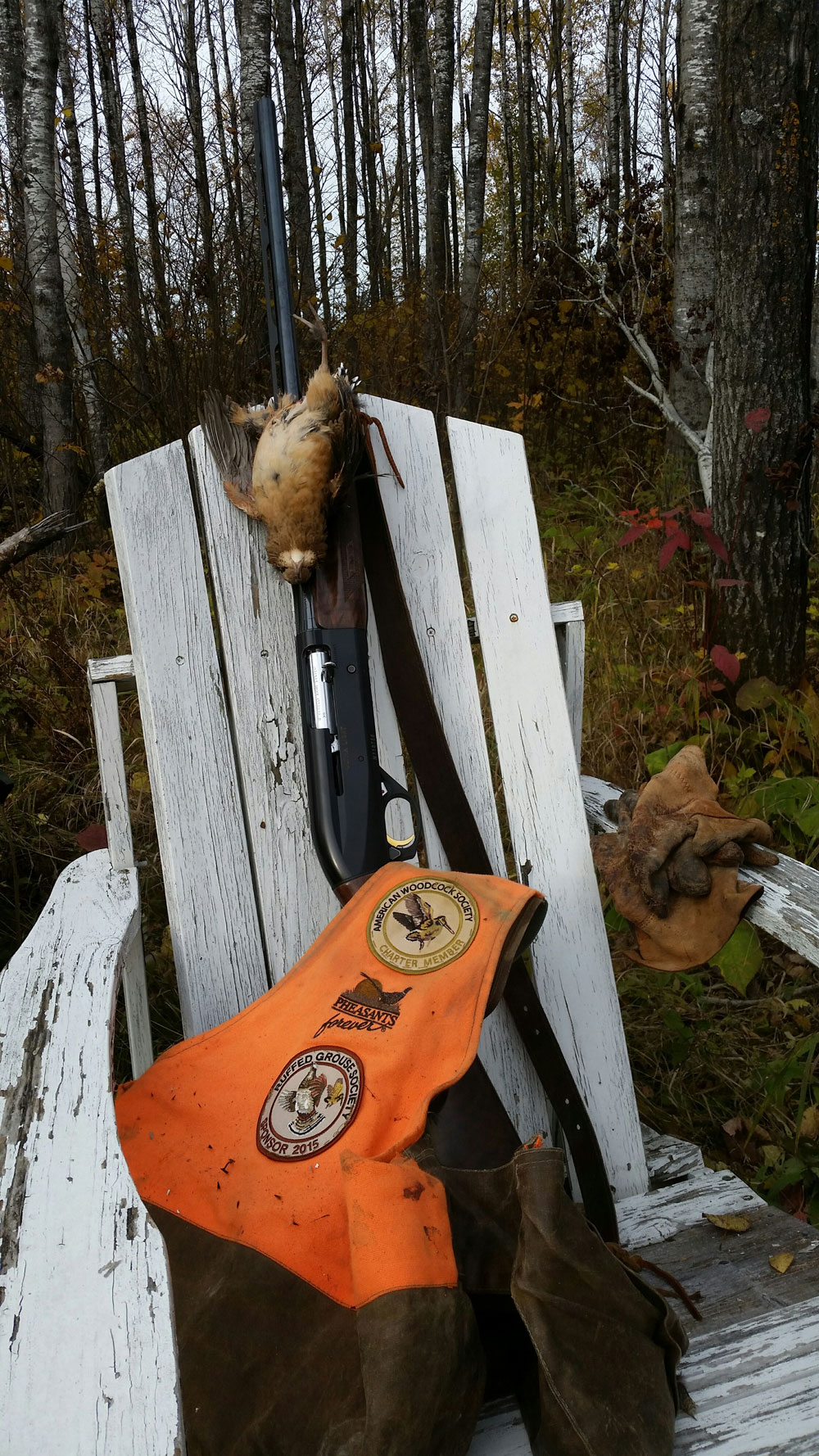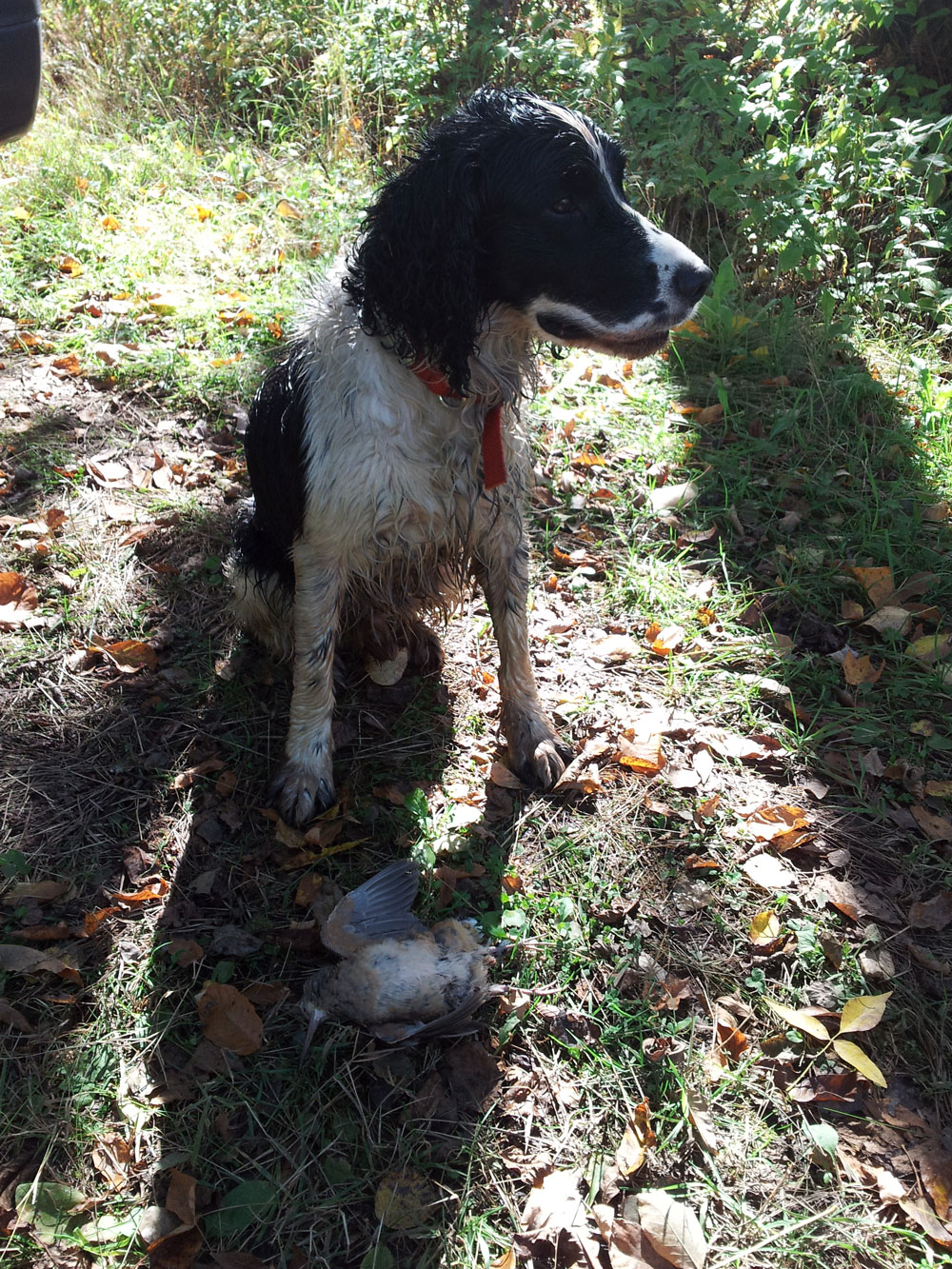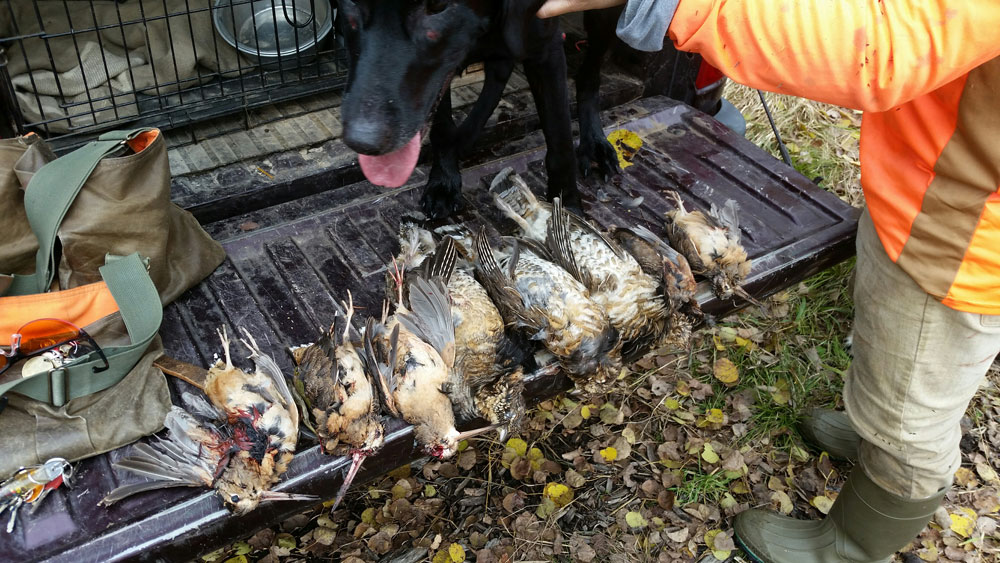I knew Hunter had flushed a woodcock in the dense aspen woods off a trail I was hiking in Carlton County, Minnesota, last fall because I could hear the bird twittering away.
Hunter, a leggy springer, would have none of this “flying off and escape” stuff and gave chase, barking all the way—a sign the bird was in plain sight. I broke into a trot to keep up with the chase, and soon Hunter pushed the bird into the open over the trail. I dropped it with one shot.
I can’t wait for Minnesota’s woodcock season, which opens September 23 and runs through November 6 (daily limit of three, possession nine). One new twist to this year’s season is the U.S. Fish and Wildlife Service, which is responsible for the migratory timberdoodle, has asked me to collect wings from the doodles I bag. They use the wings to, among other things, determine this year’s nesting success by figuring the ratio of juvenile to adults in the bag.

Blaze orange, lead, and woodcock.
Lots of juvies means a good nesting season, something that has been happening a lot in Minnesota in recent decades. The USFWS recently reported that Minnesota is the only state in the nation where the woodcock has shown a long-term population increase. From 1968 to 2017, a spring survey has shown the birds have increased nearly one percent per year, were up two percent last year, and 2.6 percent per year the past decade.
While Minnesota can be proud for continually providing the young forests woodcock need, the sad news is the birds are declining in the rest of the country. Get those chainsaws going, folks—a doodle’s favorite old-growth tree is one lying horizontally on a flatbed truck headed for the lumber mill!
These great gamebirds, for example, have declined 7.1 percent in their eastern region just this last year. I’ve been East many times as part of my job visiting quail conservationists. They all report, Georgia to North Carolina and beyond, that some citizens are effectively opposing logging old growth on public lands. Hey, we need some old growth to have a diverse forest, but many species of wildlife also need young forest. You want doodles, grouse, deer, bears, golden-winged warblers, etc.? Get choppin’!
Besides the difficulty of maintaining their habitat, woodcock are also a challenging gamebird to hit on the wing. Like mourning doves, they are small, fast fliers that can turn on a dime. Many a shot aimed at a fleeing woodcock has ended up pruning nearby aspen trees instead.
Woodcock on my 44 acres of aspen and wetland in Carlton County have increased thanks to the U.S. Department of Agriculture’s Environmental Quality Incentives Program, which is administered by the Natural Resources Conservation Service. Four years ago it organized, funded, and supervised a 10½-acre logging operation on my land to specifically benefit the woodcock and equally declining golden-winged warbler. Without the NRCS’s help, I may not have found a logger to conduct such a small-acreage cut.
Being migratory, woodcock can be there in numbers one day and gone the next. No worry; just wait for the next flight on a southbound wind. A flushed bird—I do mean “flushed,” as they will sit tight until pushed by a dog—is likely to climb to the treetops and rocket deeper into the forest—a hard shot. Those that take the easier route down the trail make for easier, though sometimes tricky, straight-away shooting. Keep your muzzle nimble, as they are apt to turn or drop suddenly.

Timberdoodles have to be flushed . . . flushed!
Years ago I was hunting grouse and woodcock on a state wildlife management area near the famed walleye lake Mille Lacs. A researcher working for the late grouse expert Gordon Gullion (1923-1991) asked me a few questions before I headed into the October woods, which were ablaze with golden aspen leaves and the glimmering reds, browns, and yellows of sugar maples.
I was going through a patch of young aspen where the ground was somewhat open and muddy. My Brit Rooster soon flushed a woodcock, which immediately towered straight up in hopes of clearing the treetops and sailing away. But I caught the bird just as it was about to crown. As he tumbled down through the aspen branches, down with him came a hail of flickering gold leaves, backlit by a still-rising sun.
Autumnal gold, and golden memories, come in many forms. A fat woodcock being one of them.

